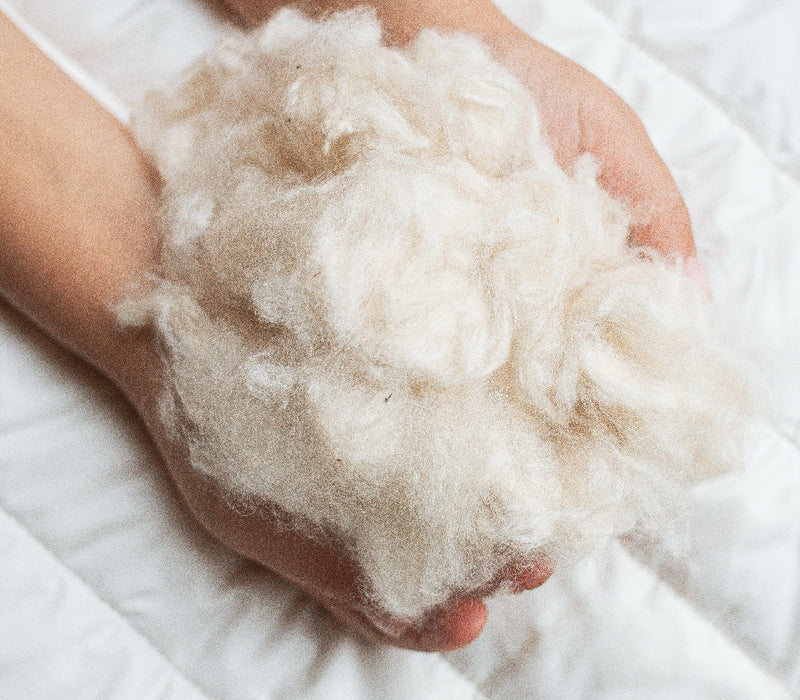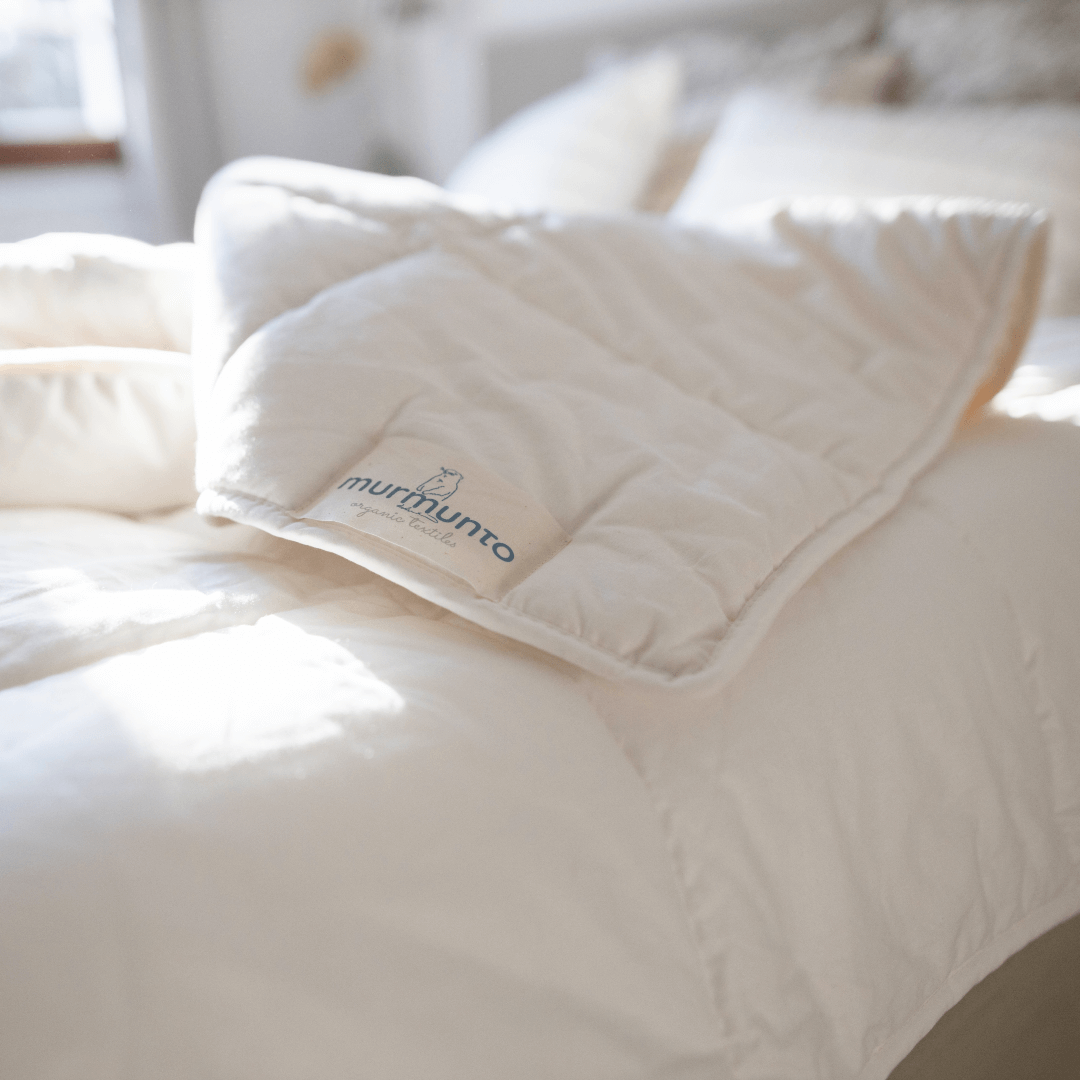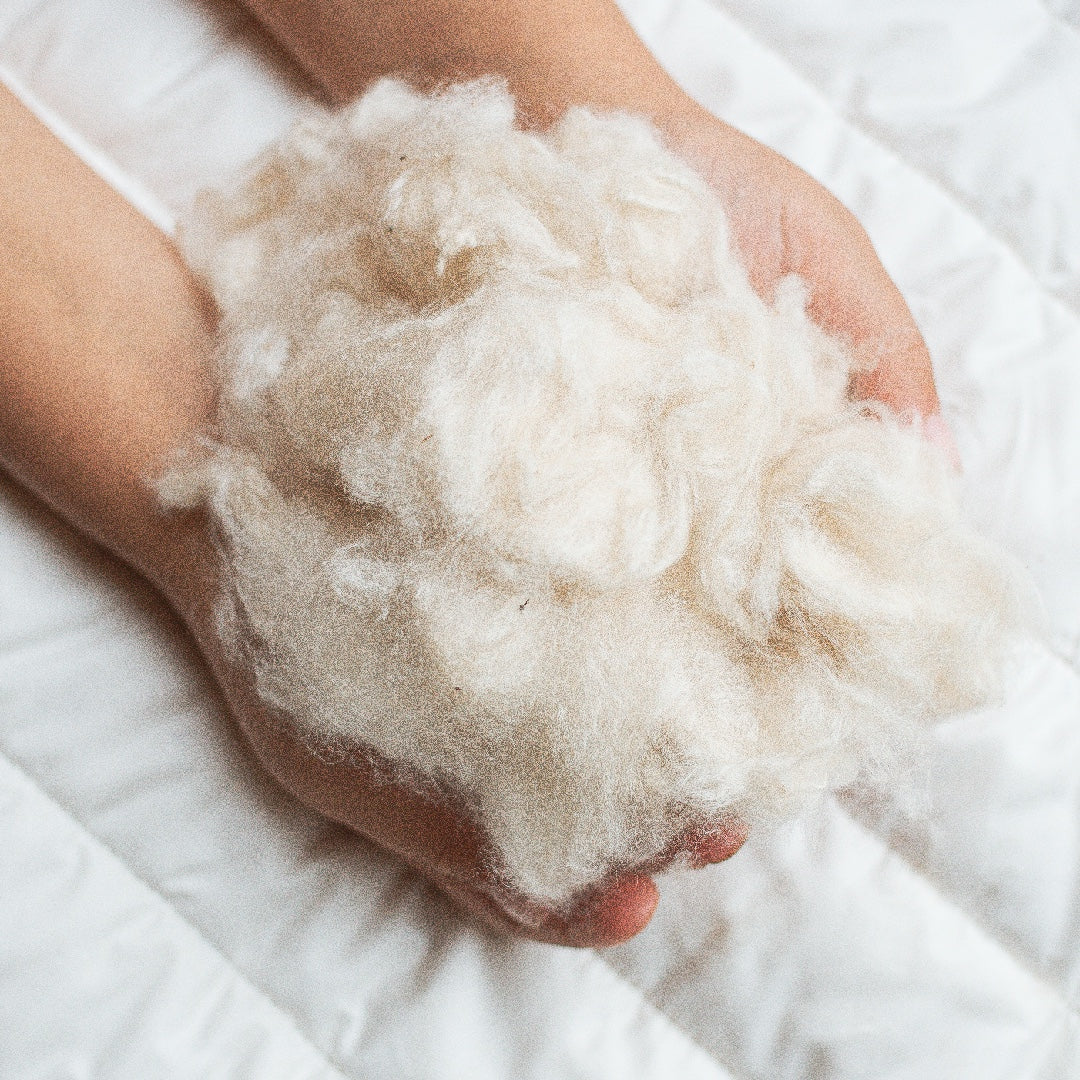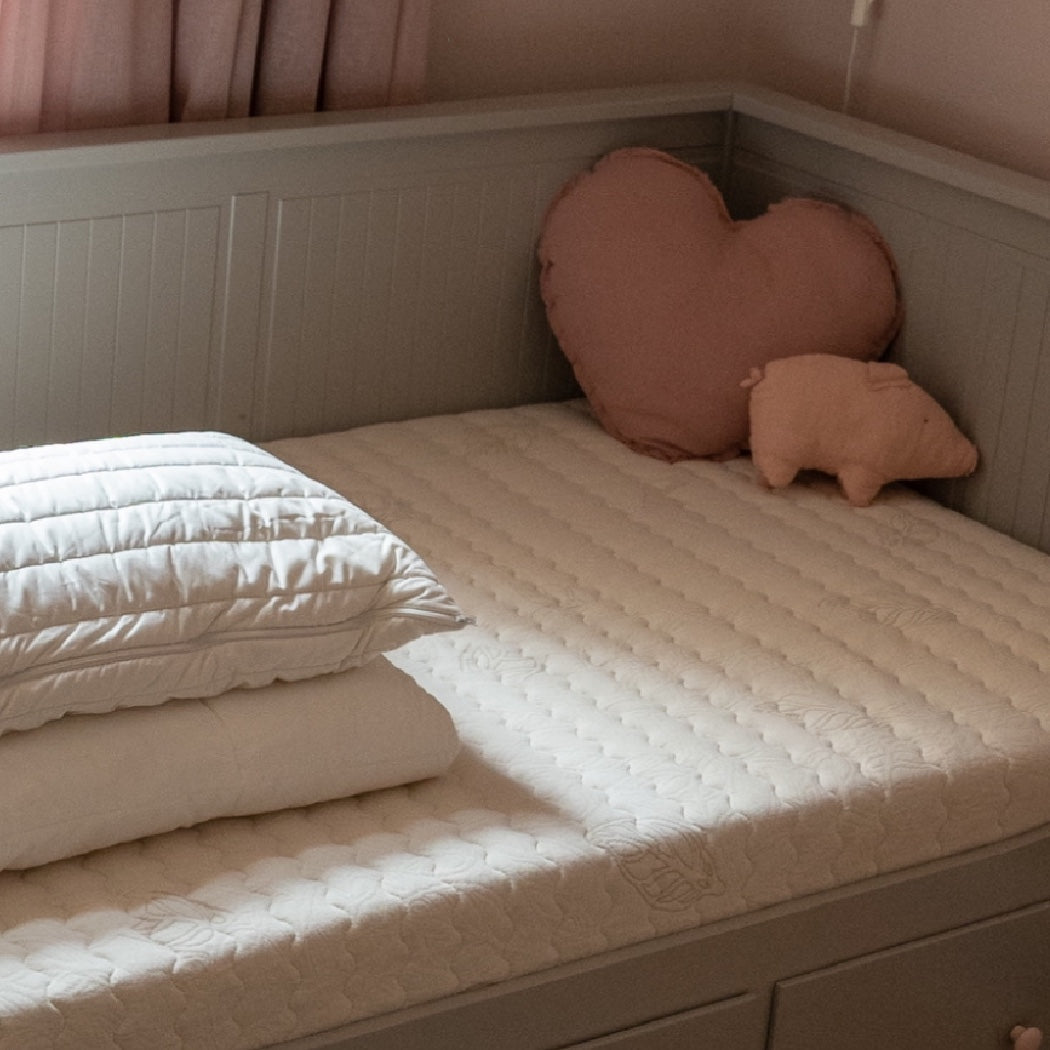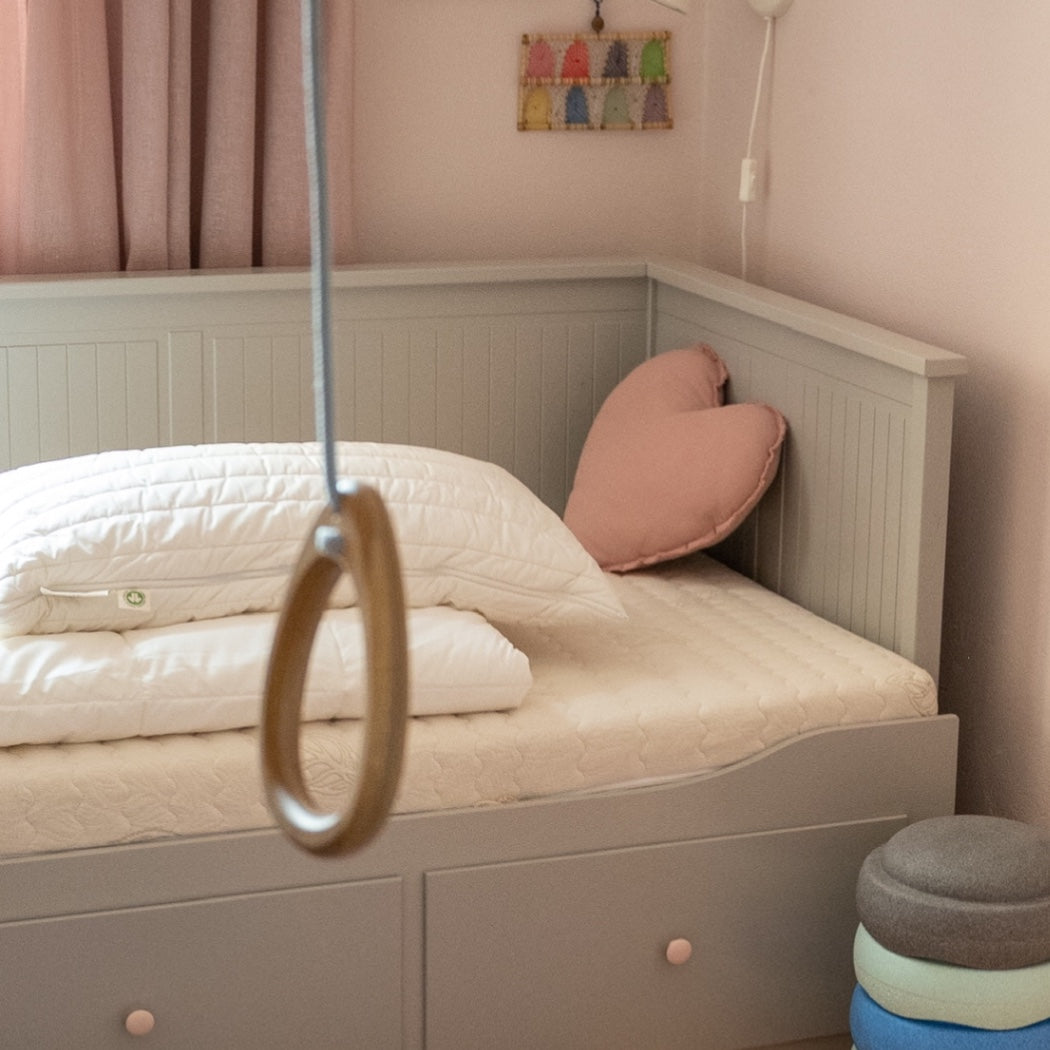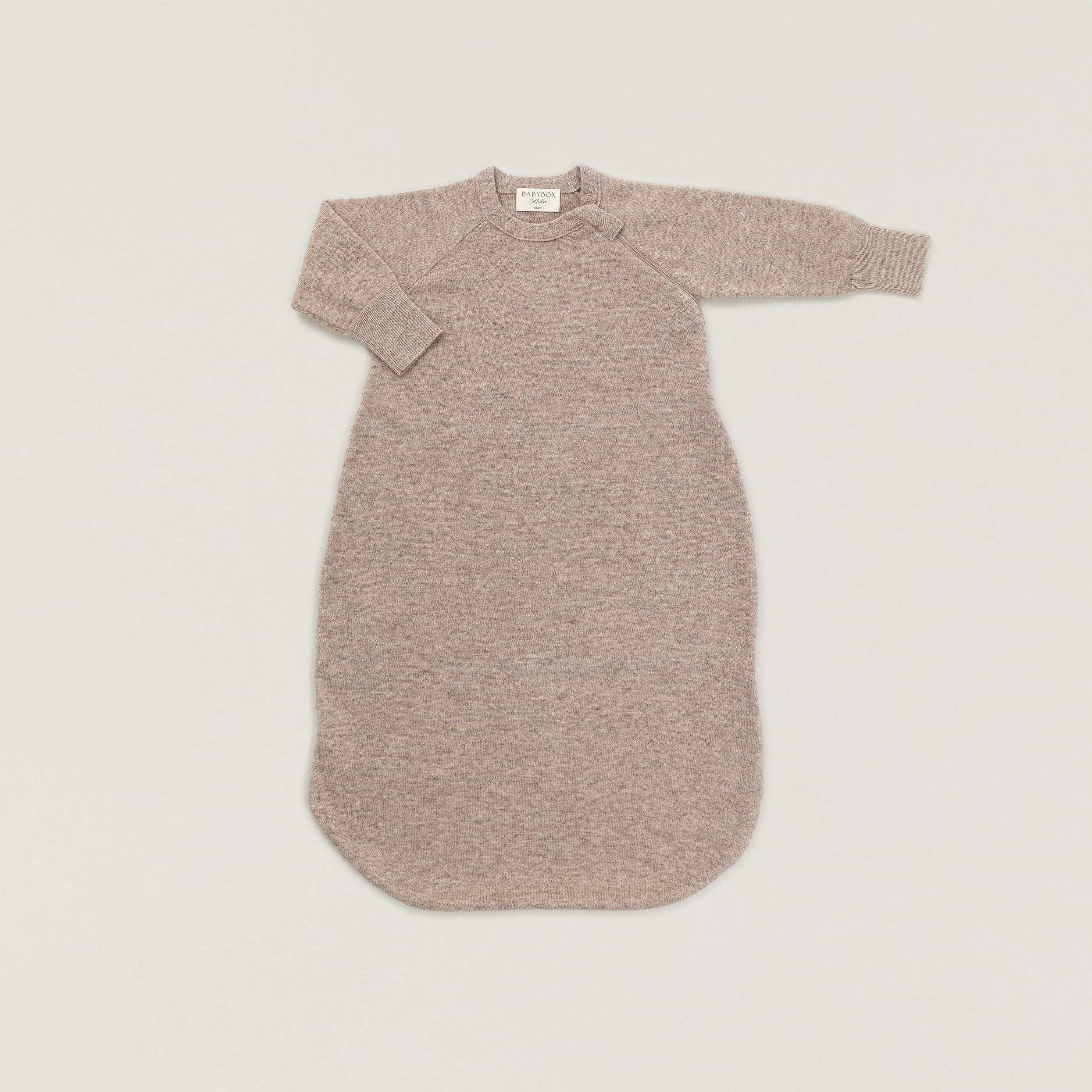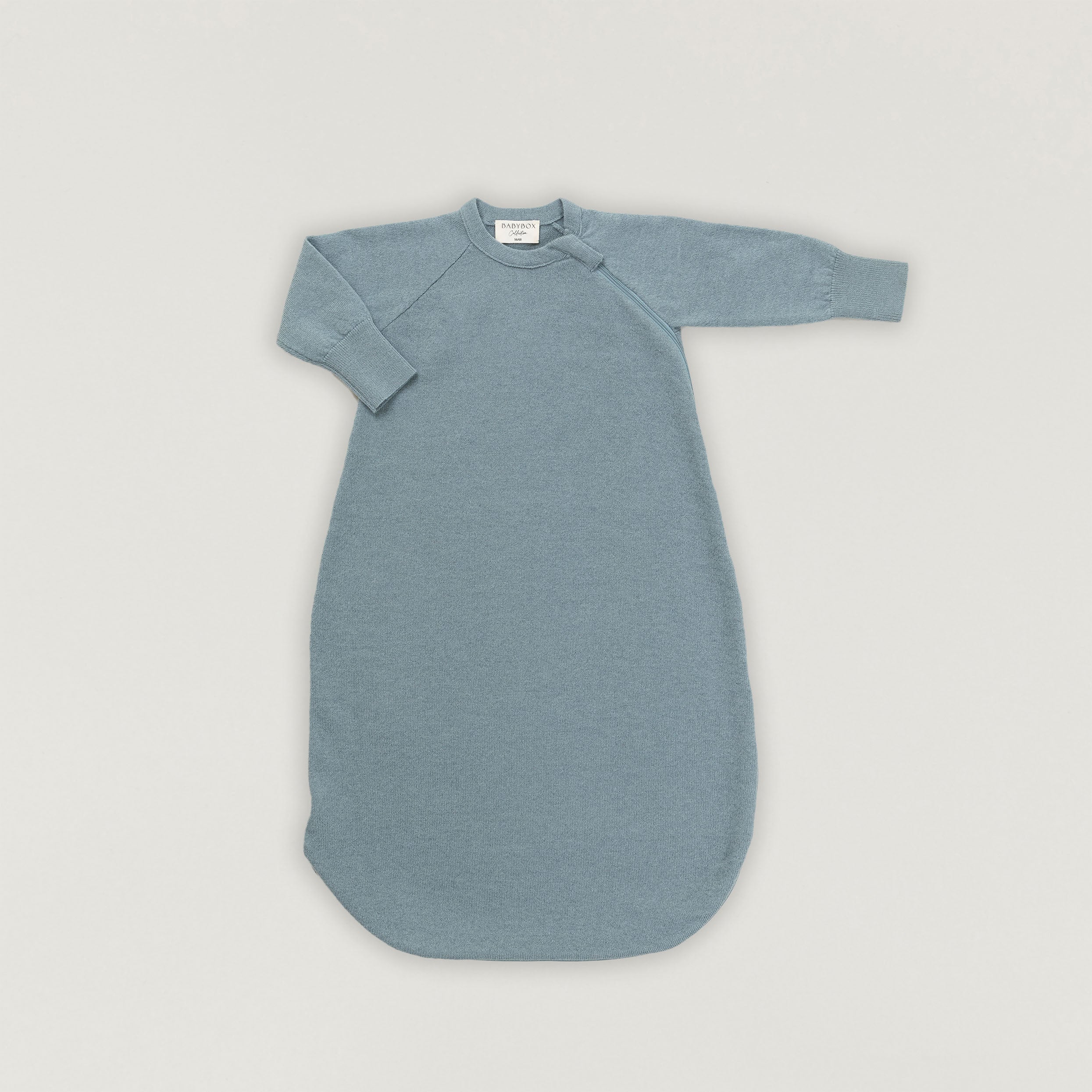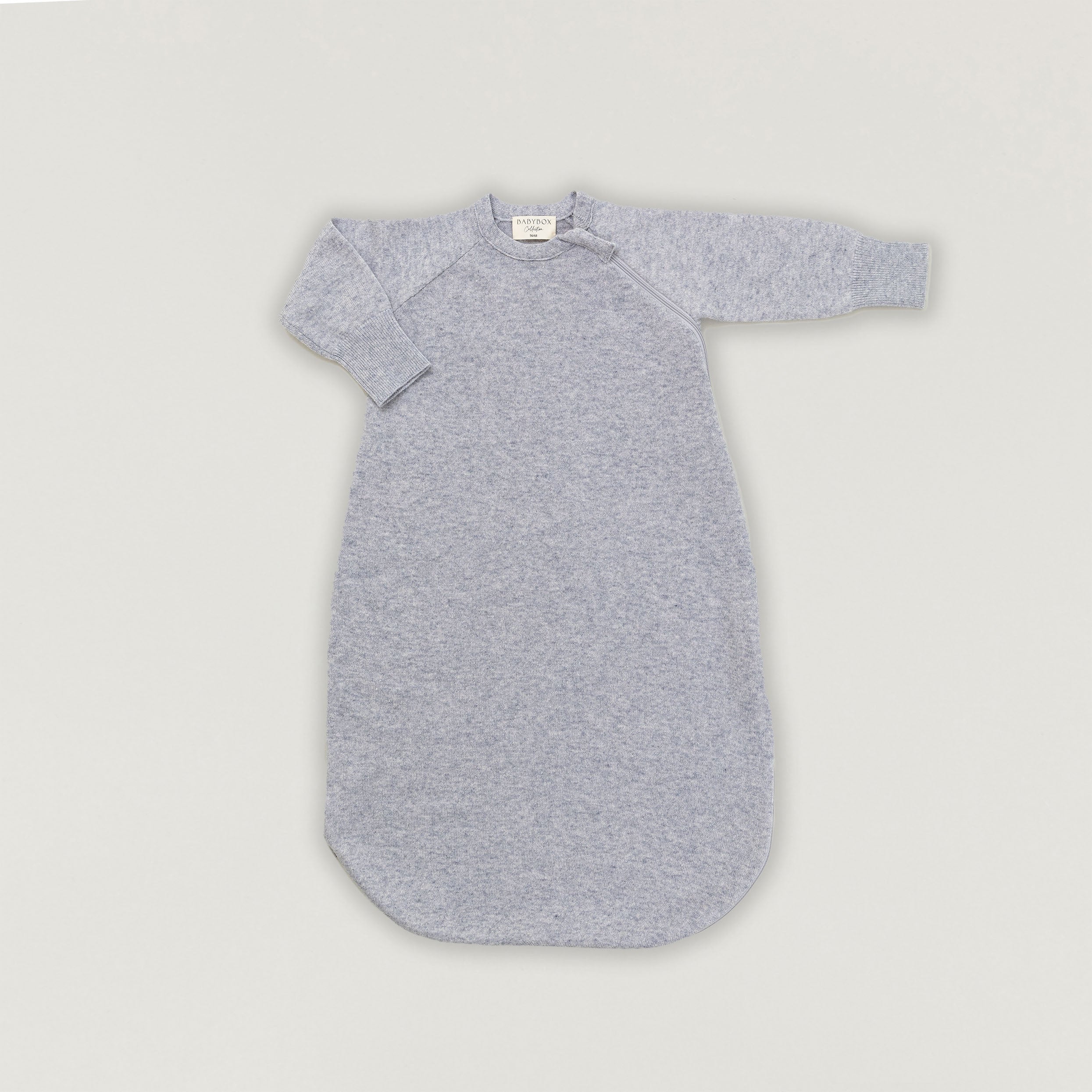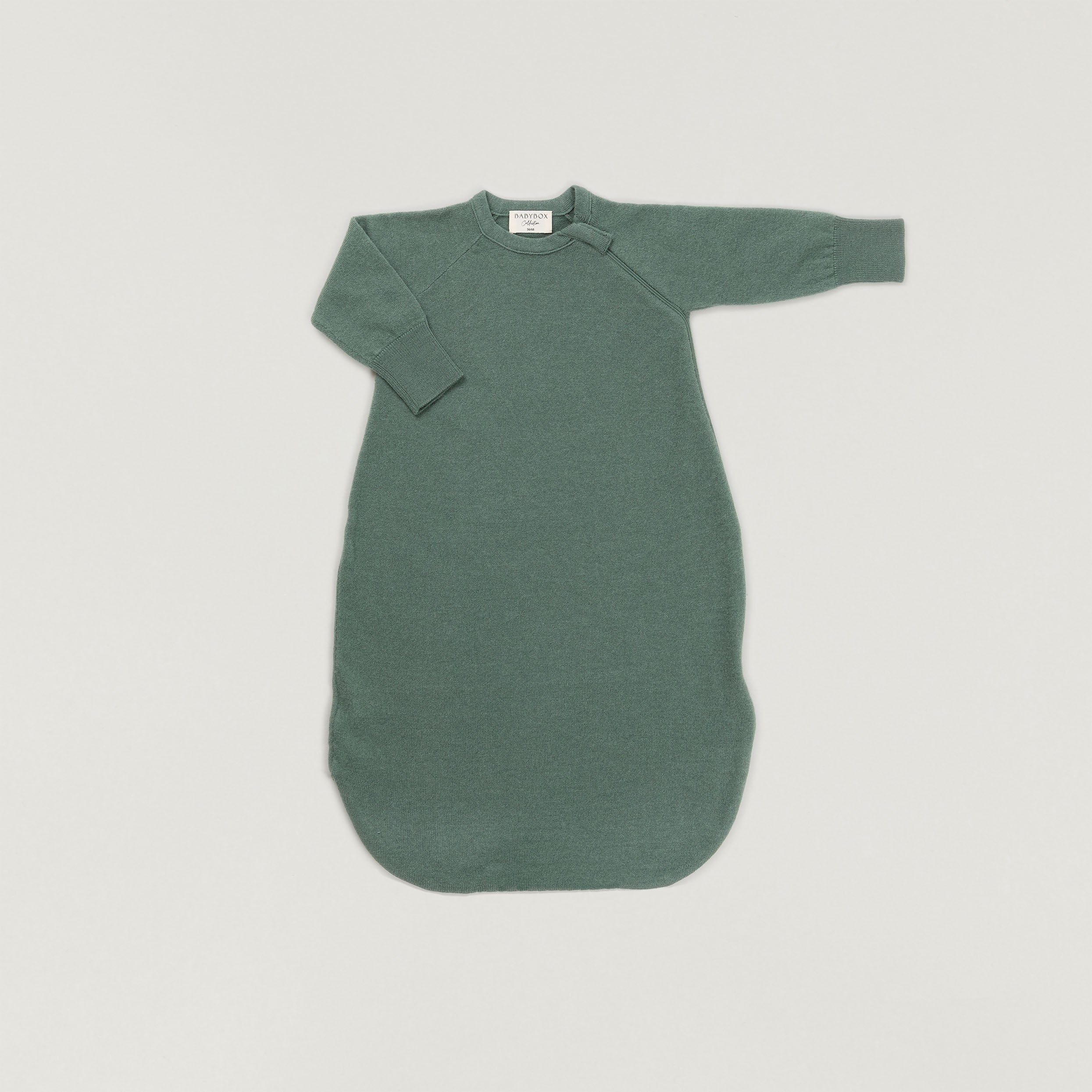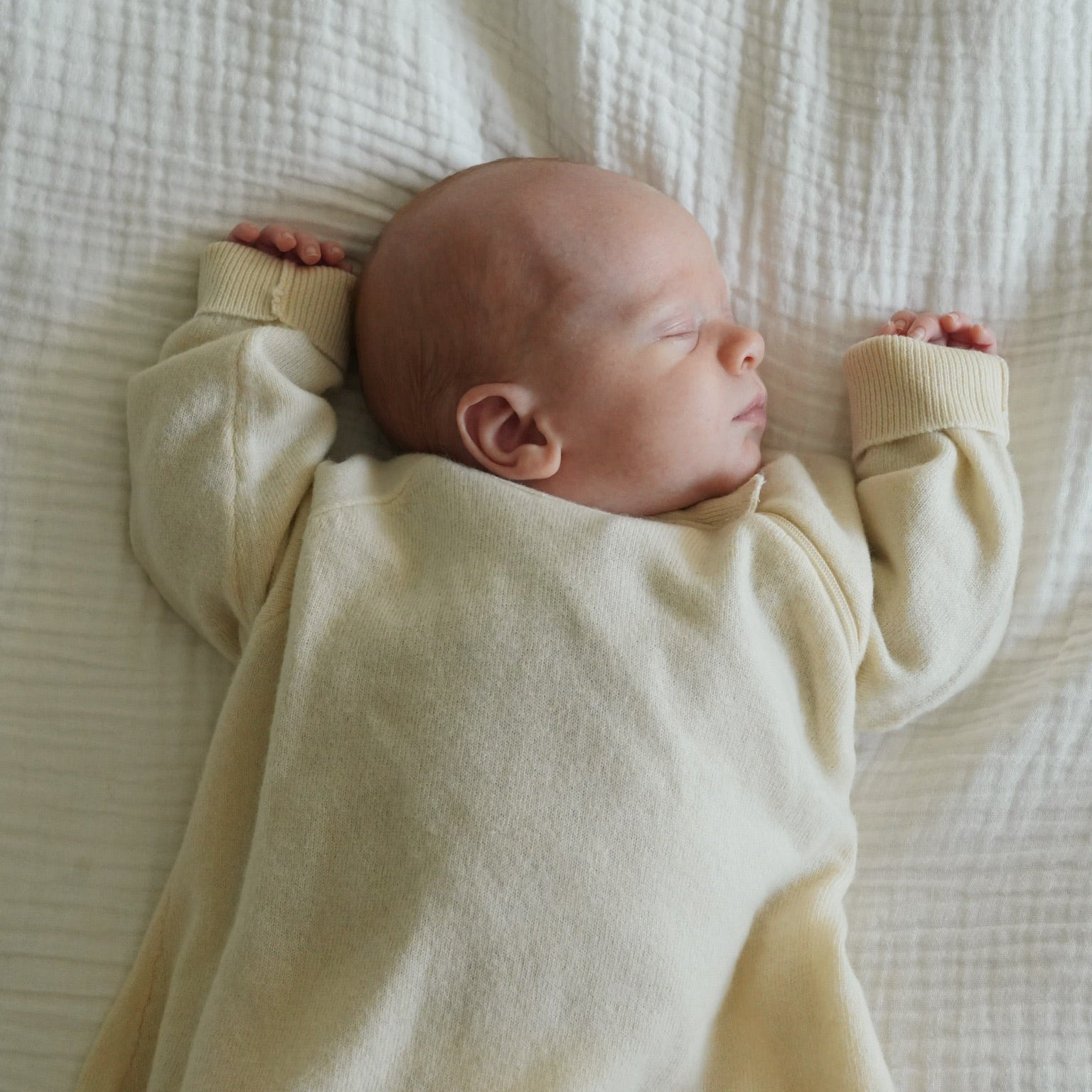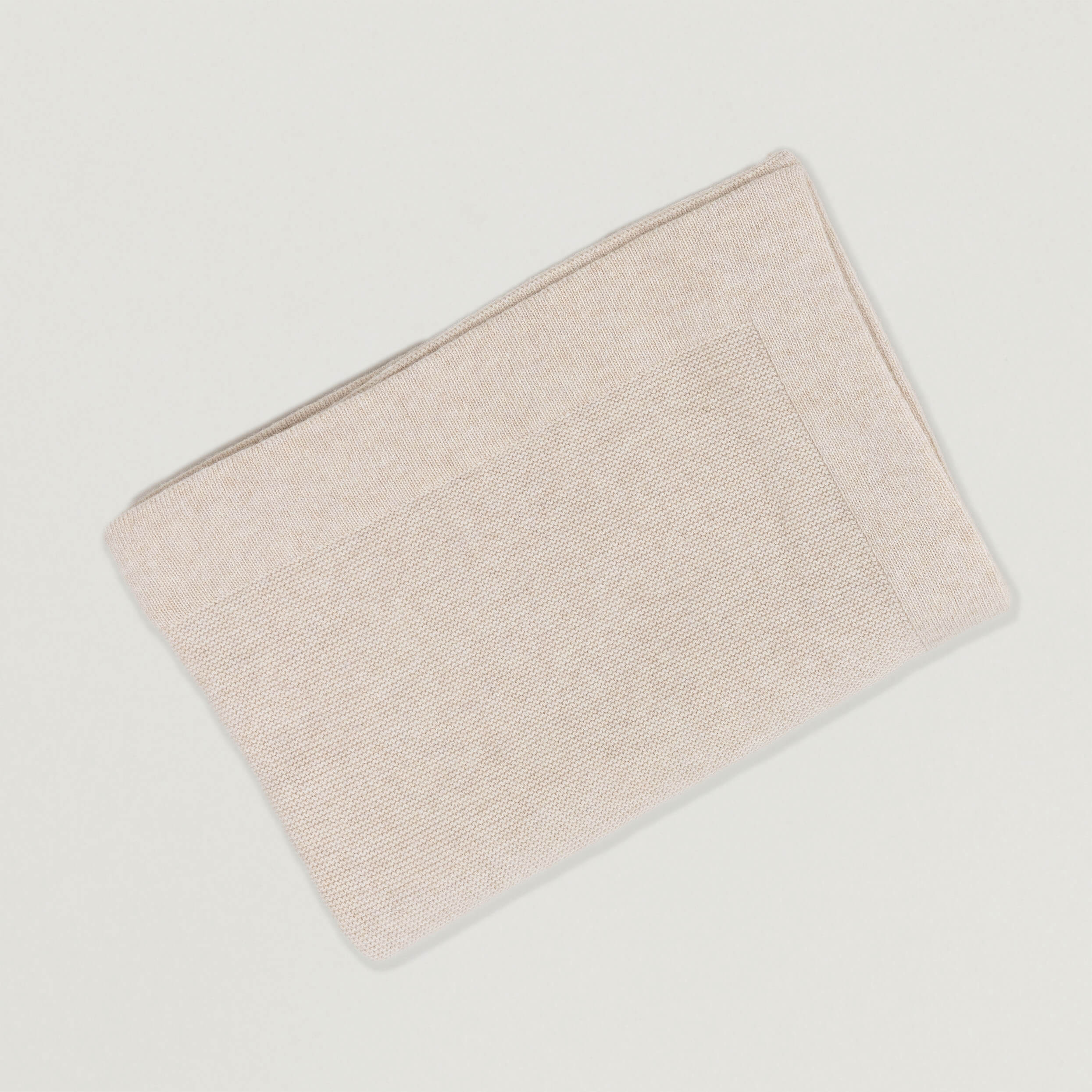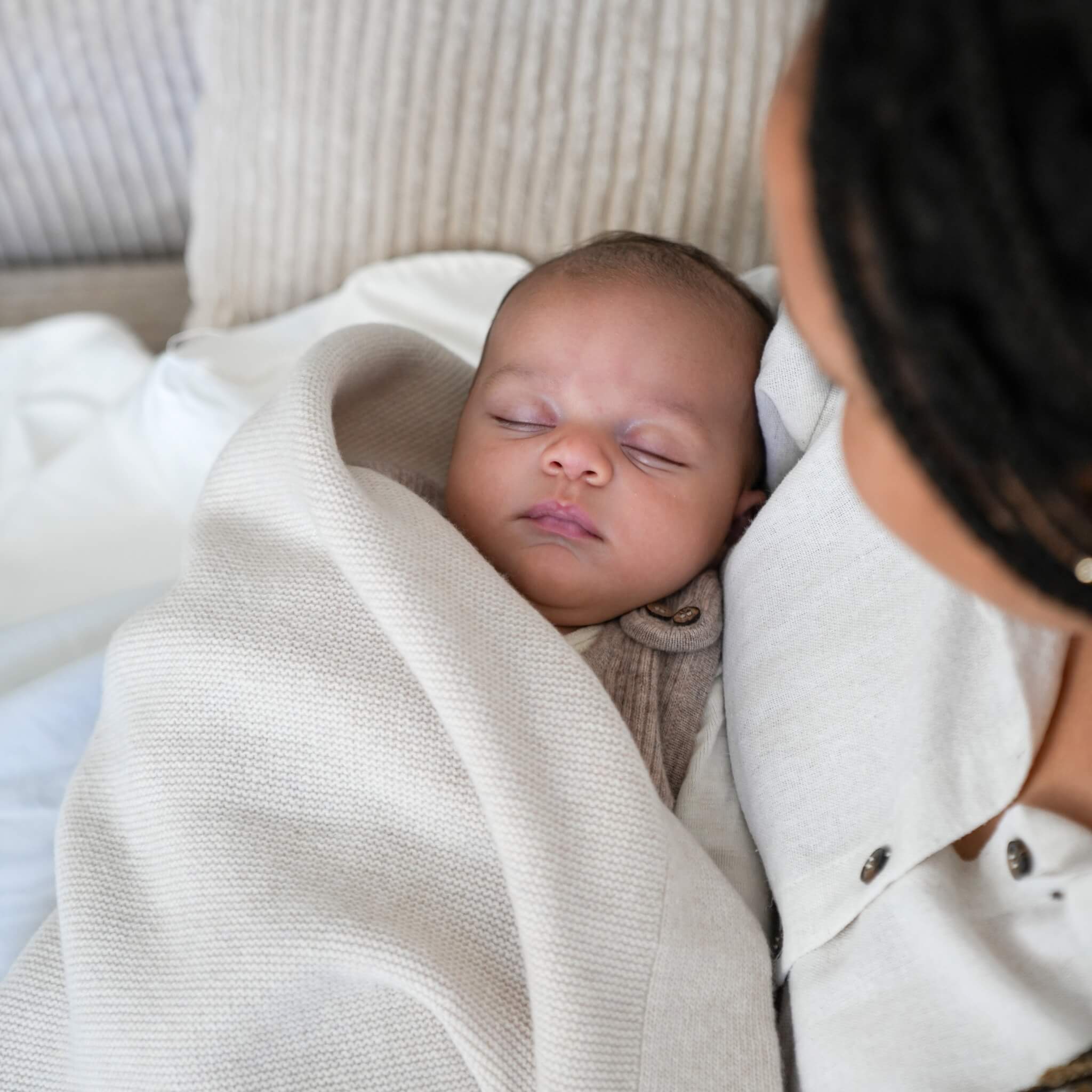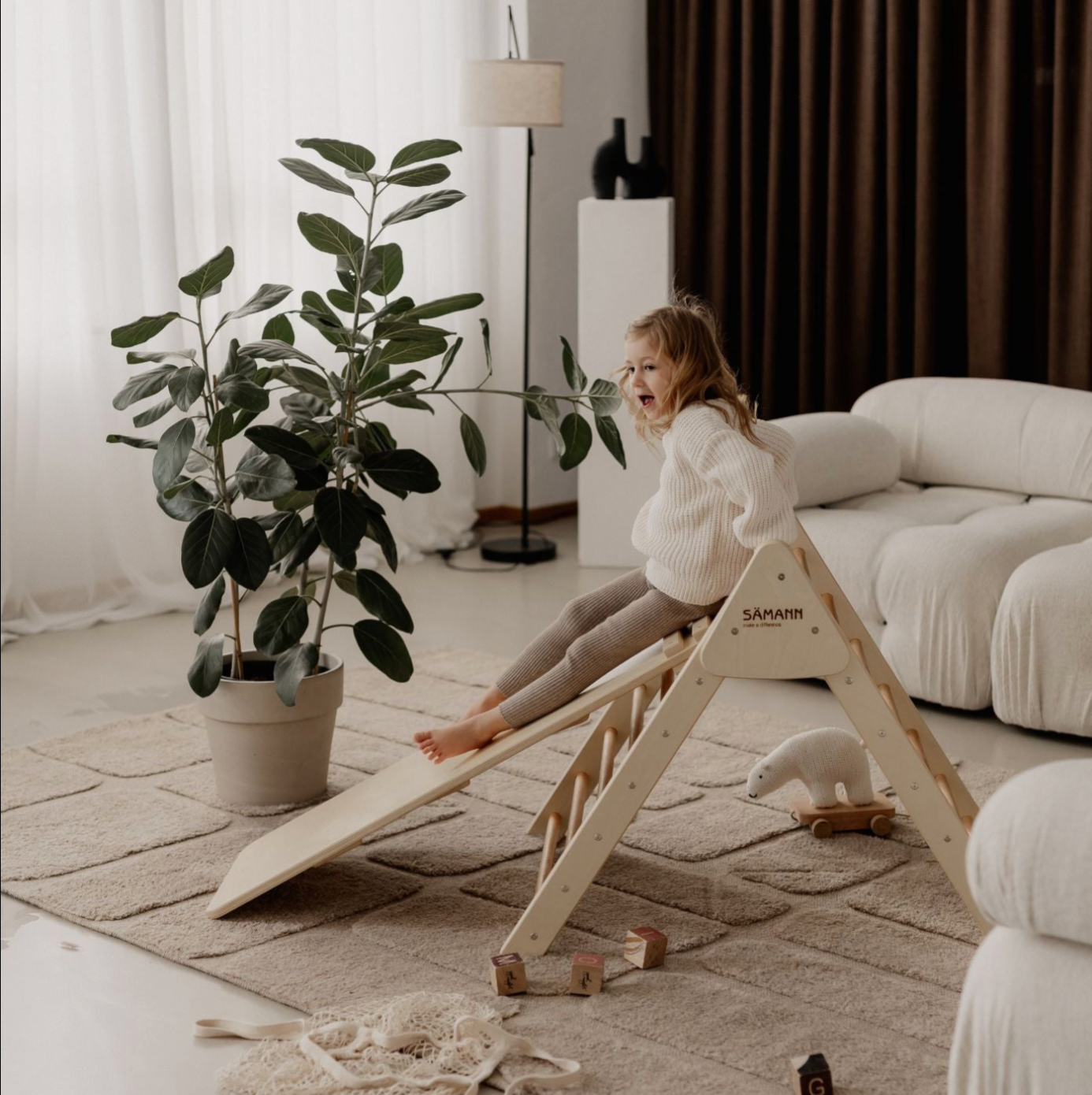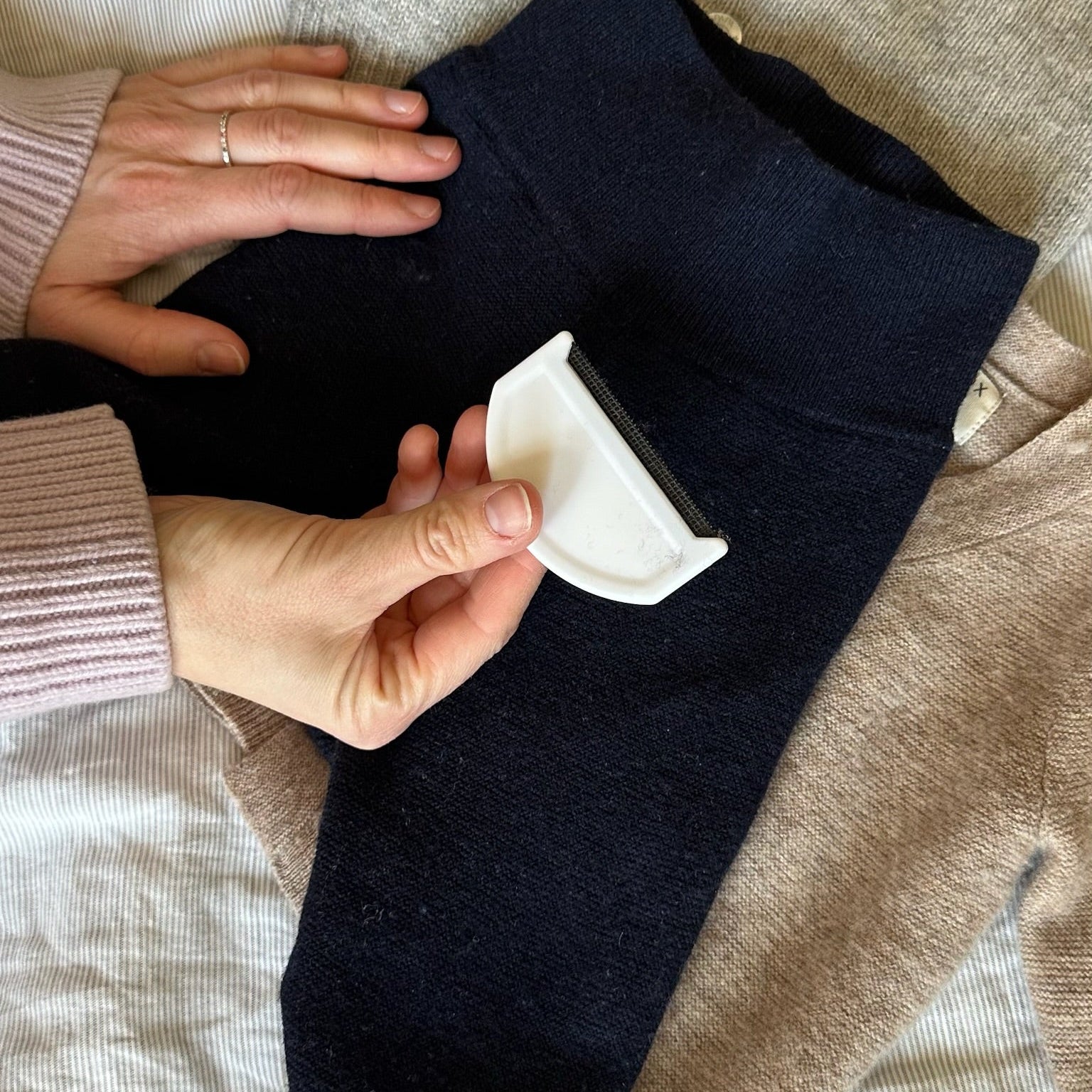Das wichtigste in Kürze:
Sleep is one of the most important pillars of healthy development for children. To help them feel safe, secure, and comfortable at night, it’s not just about love and routines – the right sleep environment also plays a key role.
In this article, you’ll learn:
✓ Why natural bedding materials like wool and kapok are so valuable for children’s sleep
✓ When to transition from a sleeping bag to bedding
✓ What exactly kapok is and how it’s harvested
✓ Why these materials are also a win for sustainability
Why Children Have Special Sleep Needs
Children cannot regulate their body temperature as well as adults. This means they’re highly dependent on their environment and the materials they sleep with.
- If it’s too warm, they sweat easily – leading to restless sleep.
- If it’s too cold, they wake up chilled.
- Synthetic materials can create heat build-up.
This is where natural materials like wool or kapok shine: They balance temperature, are breathable, and help keep your child in the comfort zone all night long.
When Is It Time to Switch from Sleeping Bag to Bedding?
For babies, a sleeping bag is the safest option. It prevents them from kicking off blankets or pulling them over their heads (important for SIDS prevention).
👉 Around age 4-5, when your child sleeps in a toddler bed without rails and can independently pull the blanket on or off, it’s time for their first real bedding.
Even then, it’s essential to choose natural, breathable materials that help regulate body temperature.
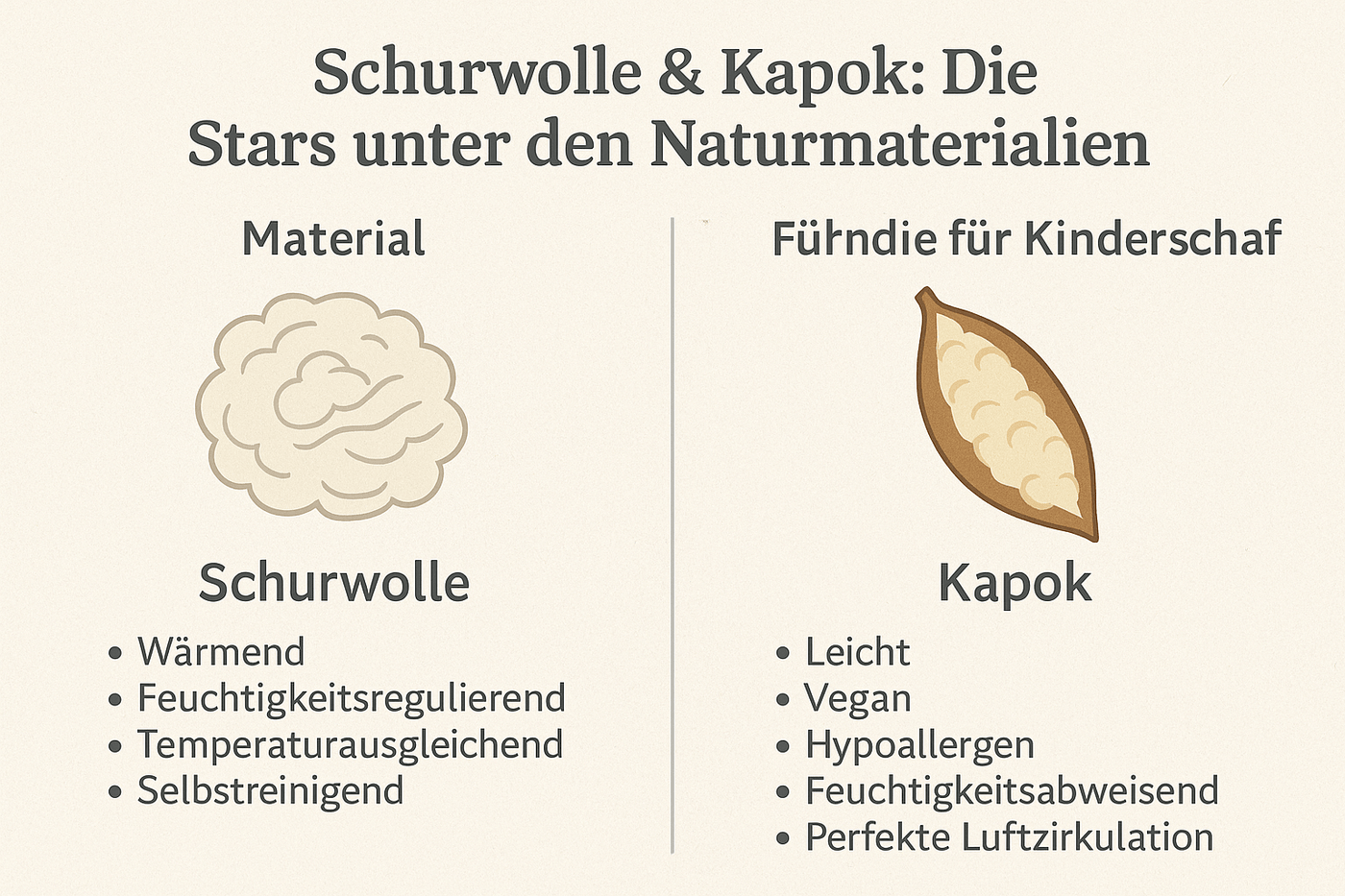
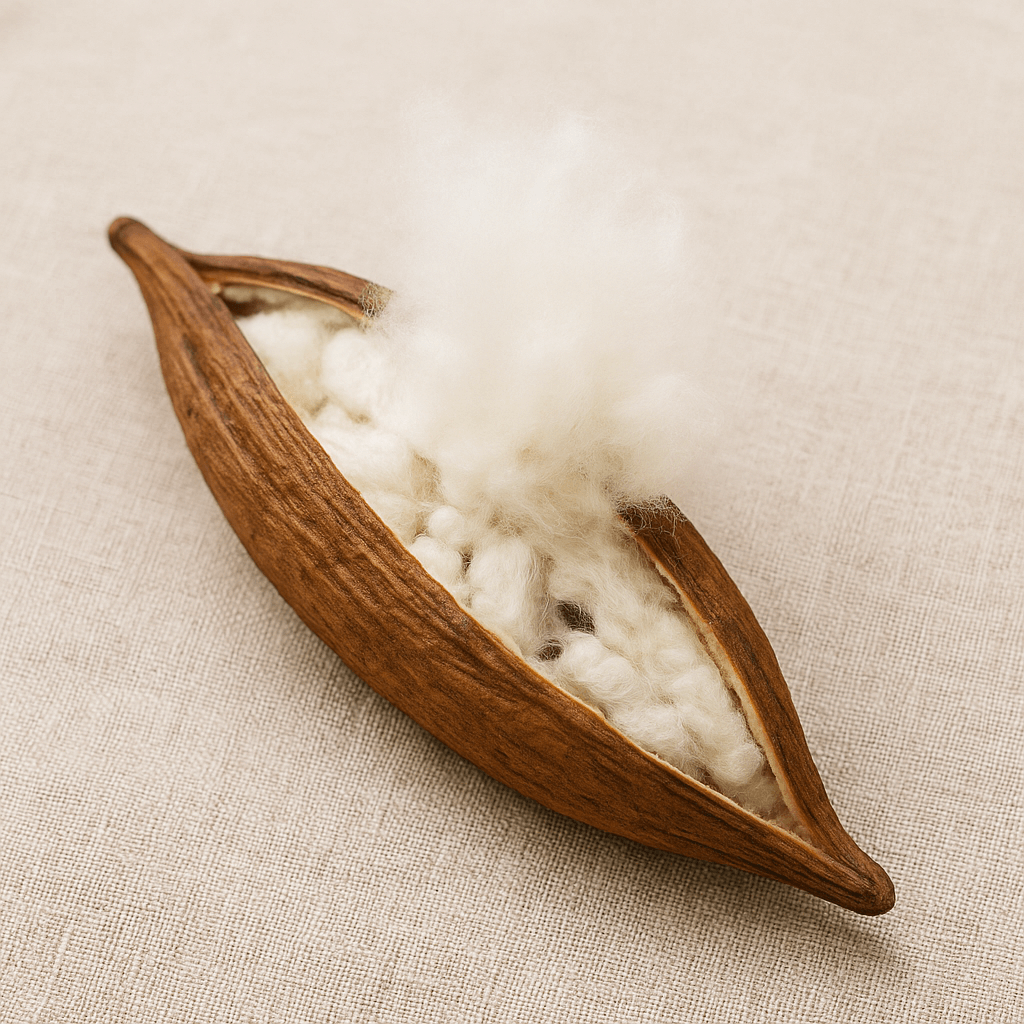
What Is Kapok?
Kapok comes from the silky fibers inside the seed pods of the kapok tree, which grows mainly in tropical regions. These fine, hollow fibers are naturally water-repellent and contain lots of trapped air – making kapok particularly light, breathable, and temperature-balancing.
A major advantage: Kapok is 100% plant-based, vegan, and hypoallergenic, making it ideal for children with sensitive skin or allergies.
Sustainability of Wool & Kapok
- Wool: Sheep’s wool is a renewable raw material that, when sourced under animal-friendly conditions (look for certifications like GOTS or kbT), is highly sustainable. It’s durable, biodegradable, and has excellent environmental performance because it needs less frequent washing thanks to its self-cleaning properties.
- Kapok: Kapok fibers are hand-harvested from seed pods without felling trees or using chemical processes. The kapok tree grows wild, requiring no fertilizers or pesticides, making it an exceptionally sustainable resource.
Our Recommendations for Natural Children’s Sleep
We’ve curated our favorite products to meet the specific needs of little sleepers:
- Merino wool sleeping bags (for babies & toddlers up to ~2 years): Temperature-regulating, soft, cozy, ideal for year-round use.
- Children’s duvets made of wool or kapok: The perfect bedding for transitioning from a sleeping bag – breathable, cuddly, and sustainable.
- Children’s pillows made of kapok: Hypoallergenic and lightweight, specially designed for sensitive little heads.
- Hot water bottles & warming cushions with wool filling: Ideal for tummy aches or just to snuggle.
Not sure which bedding suits your child? Feel free to contact us – we’re happy to provide personal advice to help you find the perfect solution. Whether it’s a Merino sleeping bag, a lightweight kapok duvet, or cuddly wool products: We’re here to make your child’s sleep a little better every night.
Tips for the Ideal Sleep Environment
- Room temperature: 18–21 °C (64–70 °F) is considered ideal.
- Clothing: Natural materials like wool or wool-silk are the best choice.
- Don’t over-layer: A lightweight, breathable blanket is usually enough.
- Avoid overheating: Check your child’s neck and fingers – warm but not sweaty = perfect!
Conclusion: Natural Sleep, Better Rest
With the right bedding made of wool or kapok, you can actively support your child’s physical needs during sleep. This helps them rest safely, comfortably, and healthily – night after night.
👉 Discover our natural children’s sleep products in the shop now!
